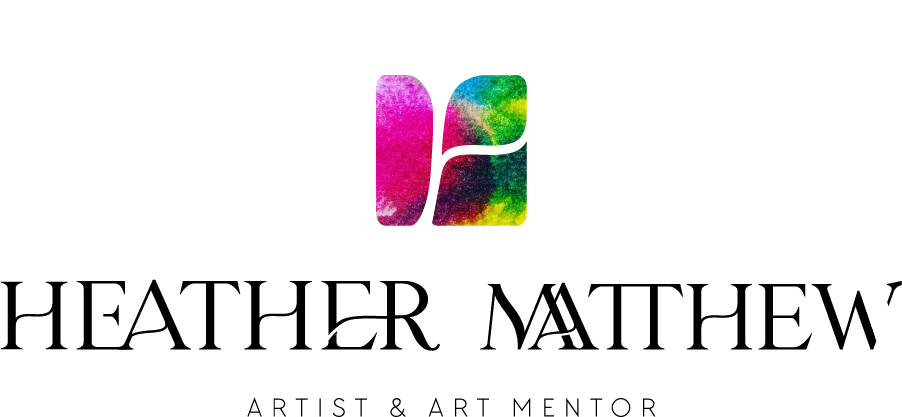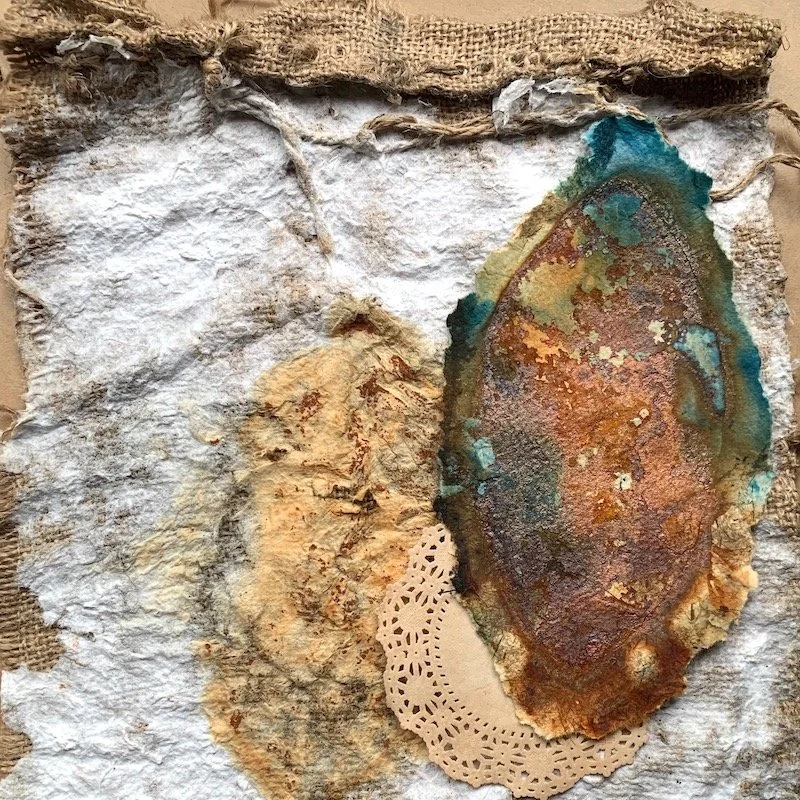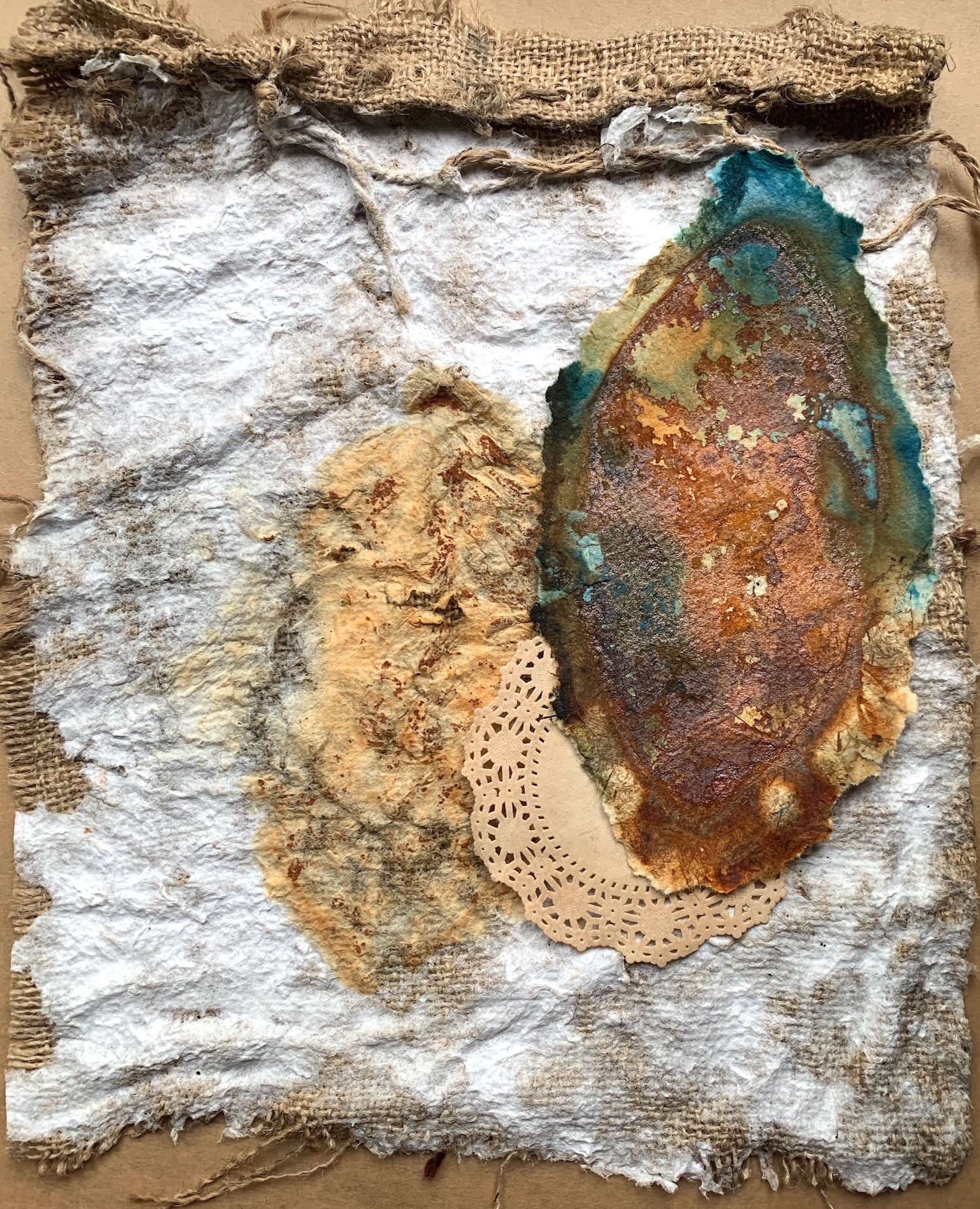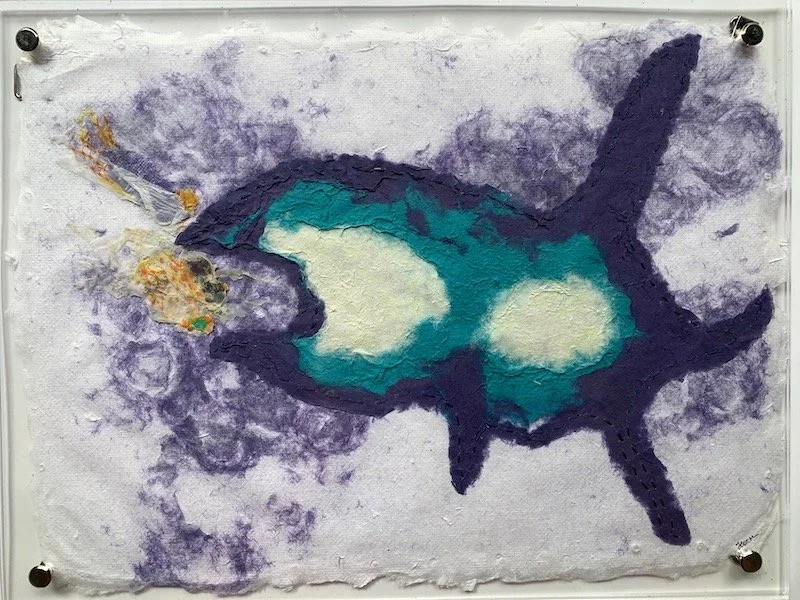The past, present
Sandbagging the Past, hessian sandbag, paper pulp, paper doily, rust marks, 2022
I’ve been thinking a lot about the past lately. It’s because I’ve started a new series of work spring-boarding from the ideas of mend and make do. The domestic occupations and preoccupations of our ancestors as they survived and adapted in times of scarcity. The days when every piece of string, rubber band and scrap of paper was saved and popped into a draw for ‘ just in case you might need it’.
So much of the domestic work my mother and grandmother did is now obsolete; the woollen embroidered fire guards or the mats with fancy stitching to put on sandwich trays for card nights. The thinking from that time is obsolete too. My mother had a copy of Mrs Beaton’s Book of Household Management where all the household tasks from washing clothes to preparing meals were written out in the order in which they should be done.
The past is everywhere surrounding me and I am now finding new ways to acknowledge it and the work my ancestors did. I found some old linen cloths and dipped them in paper pulp, to create ‘place mats’. Onto these I placed paper doilies to suggest the textiles so cherished and handed down as a matriarchal inheritance. And I added some vintage needle casings I found that once belonged to one of the great aunts.
These become new mats about time and place. They talk to me about preservation. Of objects, of homes, of lives. I became fascinated with the idea of ‘sandbagging‘ the past. With floods now sweeping across northern Victoria and western NSW, sandbags have replaced fire hoses as we struggle with the pendulum affect of climate crisis. I emptied out the sand from the sandbags that were used to protect our home in the February floods in the northern rivers, washed them and cut them up as substrates embedded with that past memory.
I dipped these too in paper pulp and cut others up for creating hessian paper. I rusted old flat irons on them, remembering how I used a flat iron heated up on our old Rayburn stove when we lived off grid in north eastern Victoria years ago. I now have a pile of these paper pulp dipped hessian bags stacked up on my studio bench waiting to be used to bring the past into the present. I think of them as time and place markers, the materials carry the impulse of peoples’ hands and activities.
I think about my own past. How at school we were ‘graded’ into three streams of study, like a ‘caste’ system. There was the domestic studies of sewing and cooking, the commercial studies of shorthand and typing and the academic studies of science and humanities. I was graded into the academic stream and consequently never learned to cook, sew, type or do shorthand, all of which would have been extremely useful skills.
So Mr Pitman’s book of shorthand writing was added to the mix and became a record of the past I experienced only by association with objects represented by textiles and paper place mats. I am now sewing myself into lines of time, place and memory, stitch by stitch.
Place Mat - work in progress
Daily artwork: Mr Pitman, Mrs Beeton & me 10x10cm collage.






